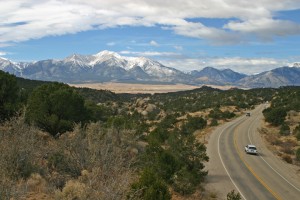by Aaron Mandelkorn
Damming water to channel through a turbine for energy generation is almost primitive in its simplicity. Yet from a modern electrical generation standpoint, it can be quite efficient at producing clean, renewable electricity on-site. You don’t have to have the Colorado River running through your yard to get electricity from flowing water. In fact, micro-hydroelectricity is a stable, cost effective and efficient form of on-site energy production.
The principals behind these systems are quite simple – hydroelectric systems capture the force behind water and use that force to generate electricity. This force is created by the flow and fall of moving water such as in a stream or river. Flow refers to how much water is moving and fall refers to the vertical drop in elevation between where the water is taken out of its source and when it enters the turbine. For hydroelectric systems, the greater the volume and fall of the water, the greater the potential for energy production. Energy can be produced with as little volume as two gallons per minute or as little fall as two feet, but never a combination of the two. Sites with low flow require substantial fall and vice versa.
Every small hydro system begins with an intake – commonly a piece of screened pipe submerged into the water. The intake carries water into a settling basin for the purpose of calming the turbulent water, thus removing air and sediment. From the settling basin, water is carried via pipe, typically downhill, to the hydroelectric turbine. This is where the force and volume of water turns a wheel connected to an alternator, creating either AC or DC electric current. Once the water has gone through the turbine, it is recaptured and sent back to its source. This is referred to as a “run of river” system. No water is consumed in the process. The energy produced by the turbine can then be transmitted to either a battery bank in an off-grid system or sent directly to the electrical grid.
The primary advantage hydroelectric systems have over other types of renewable systems is constant electrical generation. This is especially advantageous when the water source is flowing year round. Another advantage to hydro energy systems is the non-consumptive nature. The reliance is on the energy held within the water and not the water itself. This is critical for dry regions like the southwestern United States. Micro-hydro is also a more cost effective approach to renewable energy. The maintenance costs tend to be less than other energy sources and the components appear less technical (though a top of the line turbine has incredible science behind it).
Micro-hydro isn’t a good fit for people whose energy requirements may outgrow their site’s size and flow. It can’t be expanded easily as energy demands get bigger. There is also limitation because of seasonal fluctuation, which is very common in this area. Adequate site knowledge is a crucial component to proper system sizing. This also comes into play when thinking about environmental impacts to diverted water.
As with any moving piece of equipment, maintenance can be expected. With the constant spinning of a turbine, wheel bearings will need to be greased and replaced every few years. Settling basins fill up with silt and have to be dug out, and pipes need to be kept clear. In applications where the intake is far away from the turbine, long runs of piping are used to bring the water where it needs to go. The same goes for situations where the turbine may be some distance from the battery bank or electric meter. There comes a point in usage of any form of energy where the cost it takes to utilize said energy is unbalanced with the amount of energy generated. For citizens not relying on grid-produced (and therefore, subsidized) electricity, choice of energy is key and few sites will be perfect for micro-hydro.
Choosing lifestyles requiring large amounts of energy means limiting the diversity of energy resources available. With the ability to reduce energy requirements comes a space for resources overlooked because they were too “small scale to power anything.” Micro-hydro isn’t advantageous for many sites, but when it is applicable, this form of energy can be the hidden oil well of your backyard. The capability to produce site-made power out of a small stream will make you feel like Jed Clampett. And the sound of running water will have never sounded so sweet.
Originally from South Florida, Aaron Mandelkorn now lives and works in Salida. He runs Renewable Energy Outfitters and specializes in remote power systems, with extensive knowledge in solar, wind and micro-hydro system technologies. He can be reached at reosolar@gmail.com


